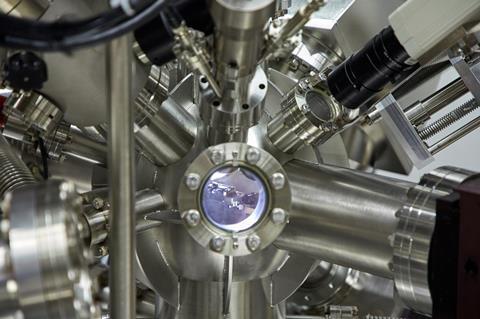A crisis of meaning – lessons from surface science

‘Why is that interesting?’ ‘How does that impact the real world?’ ‘What is the point?’ Many of us involved in the chemical sciences must answer these questions about our work. Chemistry’s historic role in society inspires me to undertake research that tackles modern-day problems (fuel cells, photocatalysis, photovoltaics). However, regardless of how cool it is to fire femtosecond laser pulses at single atoms, those questions still nag at me when I reflect on ‘the point’ of my own work.
Adding grains of information to the desert of human knowledge is a romantic justification for academic research (in a good way!). However, we researchers often find ourselves delicately dancing between this purist ideology and insisting that our work will have practical impact depending on the needs of a grant, journal or conversation. Of course, it is understandable to want one’s research to serve society. But often that connection isn’t particularly tangible, and it can feel a bit dirty when we spend considerable time convincing others (and ourselves) of the purpose of our work. This feeling can also be mixed with impatience. Not only does the research have to mean ‘something’, it has to mean something now. Of course, this is frustratingly unrealistic. So whenever the purist-practical seesaw in my mind feels lopsided, I find an example from my field of surface science serves a refreshing antidote of perspective.
Do the measurements we take in vacuum mean anything in real-life situations?
Albert Einstein won the Nobel prize for his work in 1905 on the mathematic description for the photoelectric effect. In his paper, he finishes the introduction with a statement, that, when translated into English in essence says ‘In the hope that this work will be useful to investigators in their investigations’. In part this reflects Einstein’s humble nature – but it notably doesn’t attempt to relate the work to a practical solution for a societal need.
It was 1954 before Kai Siegbahn built on Einstein’s work by developing an analyser capable of accurately measuring electron kinetic energies. He visualised sharp peaks corresponding to individual atomic orbitals and was clear what opportunity this provided. X-ray photoelectron spectroscopy (XPS) was born and a flurry of research, characterising the electronic structure of condensed matter systems, commenced. In the following years, XPS became ubiquitous across academic institutions, became widely available commercially, and even formed the basis of private companies. As such, it would be easy to think that XPS had climbed to the top of the practical ladder.
However, in recent years another conversation has arisen. Since these measurements are inherently surface sensitive, probing a few nanometres into the sample, XPS requires the pristine, sterile conditions of an ultra-high vacuum (10-12 mbar) – a thousand trillion times lower than pressure on earth. The extent to which these measurements can be used to provide information on heterogenous catalysts, optoelectronics and semiconductors is therefore limited by the question of how well these materials bridge the so-called pressure gap. Do the measurements we take in vacuum mean anything in real-life situations? The solution to this challenge is not trivial. Not only do samples have to avoid contamination, emitted electrons must reach an analyser without gaseous collision.
It was another 25 years before a solution was found. By modifying an electron analyser with successive pumping, it was possible to raise the pressure around a sample but minimise pressure fluctuations at the analyser, giving rise to the exciting field of ambient pressure XPS. It is now possible to study solid–gas reactions via their individual electronic states. This has led to significant advances in our understanding of processes such as the Fischer–Tropsch reaction, water purification, the water–gas shift reaction and many more.
This 75-year-long story is a reminder that the timescale for practical impact may not always align with your career – or your lifespan. It’s also a reminder that seemingly fundamental ‘purist’ research can sometimes lead to work with tremendous practical societal benefit. However, I personally prefer to be reminded of Einstein’s motivation to be ‘useful to investigators in their investigations’. It is easy to be swept up in the need to satisfy a journal’s requirements for broad appeal, or to quell a family member’s questioning with sensational comments that don’t reflect reality (something I am guilty of). Einstein’s words capture what we should all be aiming for in research, regardless of our position on the purist–practical spectrum.












No comments yet